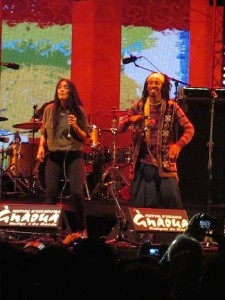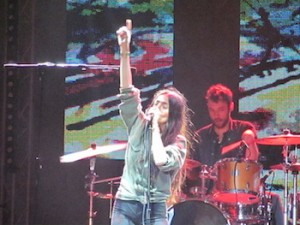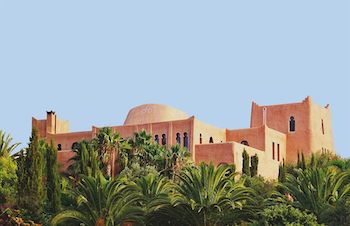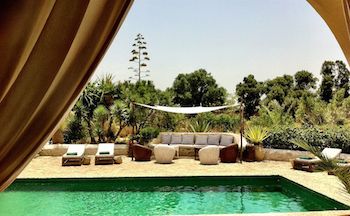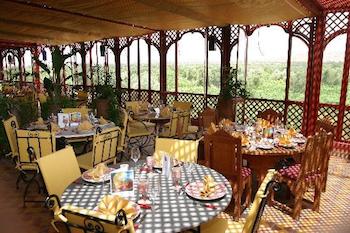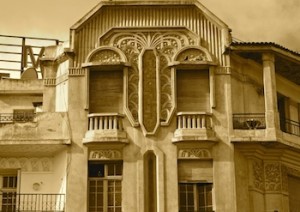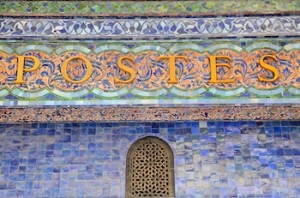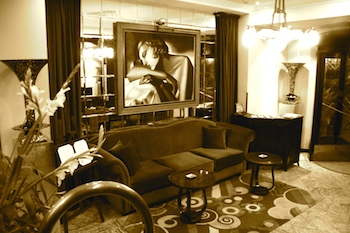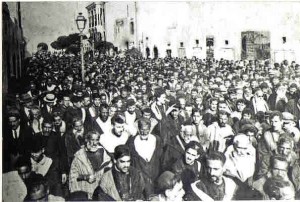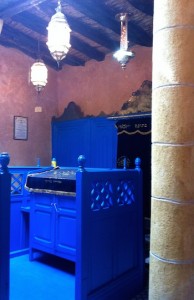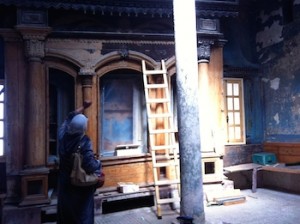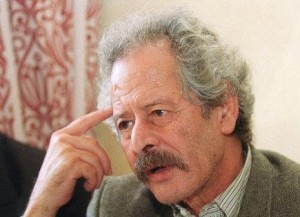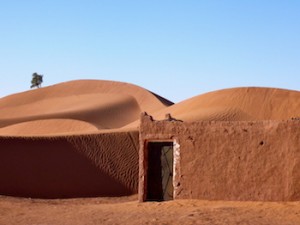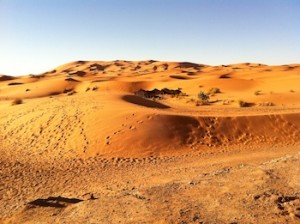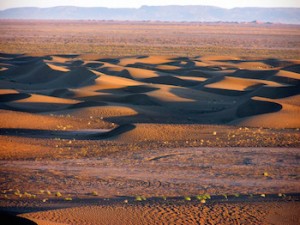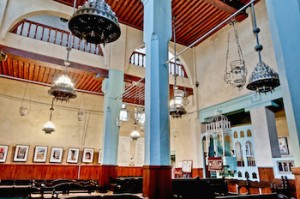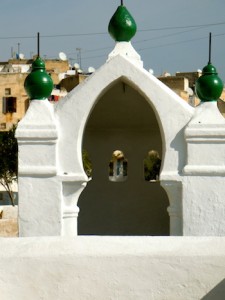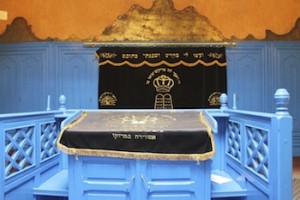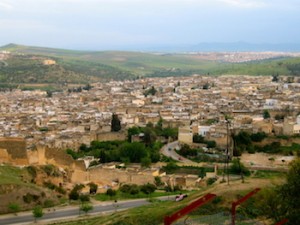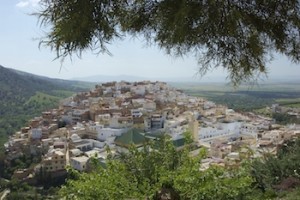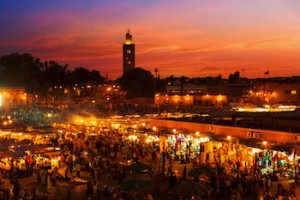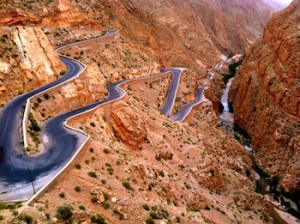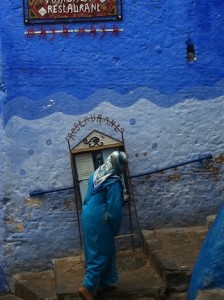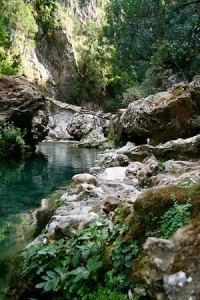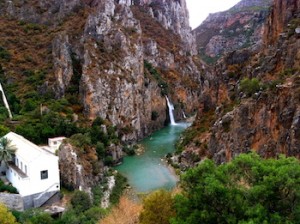
Essaouira 18th Annual Gnaoua Festival, May 2015
Every year, the sun-bleached, windswept city of Essaouira on Morocco’s Atlantic coast plays host to a festival of Gnaoua and World Music. Normally it is held in June, but this year’s 18th edition will take place – like many of the main Moroccan music festivals – in May, to avoid a clash with the holy month of Ramadan. The dates for this year’s event are 14-17 May 2015.
The principal feature of the festival is the celebration of Gnaoua music and rituals. The Gnaoua movement is a form of Islamic Sufism. The roots of Gnaoua (or Gnawa) lie in sub-Saharan Africa and reflect pre-Islamic traditions. Successive Moorish sultans brought African slaves to Morocco and their traditions became integrated into Islamic Sufism.
Gnaoui (as practioners are known), like other Sufis, are organized into brotherhoods gathered around a Master, or maalem. These brotherhoods are based in a zawiya – a center of religious teaching, healing and practice found in towns and cities across Morocco. Sufis are known for their communion with God (Allah) through rituals such as music or dancing based on repetitive rhythms, known as samaa. The gnaoua hold spiritual events known as a lila, where the objective is for participants to reach a trance-like state of ecstasy to reach deeper spiritual knowledge. The lila rhythms and rituals are said to call up ancestral spirits to drive out evil and cure ills.
A typical instrument of the gnaoua is the gimbri, a three stringed bass lute covered in camel skin. The skin creates a deep reverberation, creating the soul-stirring basis of gnaoua music. The maalem typically plays the gimbri seated, singing the verse of a song (typically praising Allah or venerating a gnaoua saint). A chorus line of young adherents respond to his call while playing a percussive rhythm on the krakeb, iron castanets said to echo the sound of the slaves’ chains. As their clackety-clack beats hasten, the rhythm reaches a crescendo and Gnaoui may enter a trace or break ranks to demonstrate acrobatic dancing and whirling.
At the Gnaoua Festival in Essaouira, the audience has an opportunity to see both the brightly-colored, energetic spectacle of Gnaoua groups performing on large open-air stages (on Place Moulay Hassan and near the beach) as well as at more intimate concerts which simulate some of the atmosphere of a lila in smaller venues such as Dar Souiri or a zawiya. The best venue for the late night, smaller, concerts is the Borj Bab Marrakech. Lying on rugs and cushions under the stars, within earshot of the waves crashing on the beach and with seagulls calling and swooping overhead, a special atmosphere is created for some of the best known artists on the program.
As well as offering the opportunity to see the best of local Swiri gnaoua maalems and their groups, such as Tyour Gnaoua with Maalem Abdeslam Alikane, brothers Maalem Mokhtar and Maalem Mahmoud Guinea or Gnaoua rockstar Omar Hayat, the festival also an insight into the full diversity of Moroccan Sufi music – such as the more traditional and contemplative style of the Hmadcha of Essaouira; the drum-led beats of the Issaoua brotherhood from Fes, or the modern fusion style of Maalem Hamid el Kasri from Rabat.
The festival program is interspersed with performances by international artists. At the end of each evening on the main stage is the highlight – a fusion concert between one of these invited musicians and a Moroccan Sufi group. These spectacles are remarkable not only in their combination of musical genres and traditions, but also in the collaboration between artists of very different spiritual, religious and cultural traditions.
Invited guests this year include Afrobeat veteran, Nigerian drummer Tony Allen; Guadeloupian percussionist, Sonny Troupé; the latter’s sometime collaborator, US jazz saxophonist and flautist Kenny Garrett, and long-standing Gnaoua Festival supporter and collaborator, Franco-Algerian drummer Karim Ziad.
Those seeking a sample of Morocco’s diverse modern music scene, will want to catch Darga, a band from Casablanca playing a fusion of gnaoua, traditional and Western styles on the beach stage or Hindi Zahra, who has been compared to Norah Jones and Patti Smith, on the main stage.
The Festival opens with a spectacular parade of giant marionettes and all the participating Sufi groups on the Thursday afternoon. Seek out a position early on the main street through the medina from Bab Doukkala and get your camera in position!
Alongside the main concert program are also events such as the Forum – a seminar series, this year about African Women – and the Arbre à Palabre discussions held at the French Institute. This year there will be a smaller stage with afternoon concerts at Bab el Minzeh near the port. The open air concerts (on Place Moulay Hassan, at Bab el Minzeh and at the beach) are all free, although they can get crowded at night. VIP passes for an enclosed area near the stage can be purchased on site. The intimate concerts are ticketed (for example, concerts on the roof of the Borj Bab Marrakech at 250 dirhams) and places are limited.
Essaouira’s range of festivals throughout the year (such as the Alizés Festival in April and the Andalusian Festival in the Fall) highlight the melting pot of musical and cultural influences that is Morocco, but the Gnaoua World Music Festival is unparalleled in its showcasing of gnaoua music in its original form as well as in fusion with a range of world music styles. If you are in Morocco this May, don’t miss it!
ESSAOUIRA 18TH ANNUAL GNAOUA FESTIVAL PROGRAM
THURSDAY, MAY 14TH:
PLACE MOULAY HASSAN
OPENING CONCERT RÉSIDENCE HUMAYUN KHAN AND MAÂLEM HAMID EL KASRI
CONCERT MAÂLEM MOKHTAR GUINEA
CONCERT MIKKEL NORDSØ BAND AND MAÂLEM MUSTAPHA BAQBOU
CONCERT MAÂLEM ABDELKEBIR MERCHANE
DAR SOUIRI
INTIMATE CONCERTS HMADCHA D’ESSAOUIRA
TE CONCERTS MAÂLEM ABDENBI EL GUEDARI
ZAOUIA ISSAOUA
INTIMATE CONCERTS MAÂLEM ABDELLAH AKHARAZ AND MAÂLEM SAID EL BOURKI
FRIDAY, MAY 15TH
PLACE EL MINZEH
CONCERT GANGA D’AGADIR AND ISSAOUA D’ESSAOUIRA
ARBRE À PALABRE
ARBRE À PALABRE
PLACE MOULAY HASSAN
CONCERT SONNY TROUPÉ
CONCERT MAÂLEM OMAR HAYAT
FUSION SONNY TROUPÉ AND MAÂLEM OMAR HAYAT
CONCERT TONY ALLEN
FUSION TONY ALLEN AND MAÂLEM MOHAMED KOUYOU
CONCERT HINDI ZAHRA
LA SCÈNE DE LA PLAGE
JAUK, LE GNAOUI BLANC ET MAÂLEM AZIZ BAQBOU JAUK, LE GNAOUI BLANC AND MAÂLEM AZIZ BAQBOU
CONCERT MAÂLEM FATHALLAH CHAOUKI
CONCERT DARGA
FUSION MIKKEL NORDSØ BAND AND MAÂLEM MUSTAPHA BAQBOU
BORJ BAB MARRAKECH
INTIMATE CONCERTS TIMBUKTU
INTIMATE CONCERTS MAÂLEM ABDELKEBIR MERCHANE
ZAOUIA ISSAOUA
INTIMATE CONCERTS MAÂLEM ALLAL SOUDANI AND MAÂLEM RACHID BENTAIR
SATURDAY, MAY 16TH
PLACE EL MINZEH
FORUM “L’AFRIQUE À VENIR
CONCERT HMADCHA D’ESSAOUIRA AND ISSAOUA D’ESSAOUIRA
ARBRE À PALABRE
PLACE MOULAY HASSAN
CONCERT MAÂLEM HASSAN BOUSSOU
CONCERT KENNY GARRETT
FUSION KENNY GARRETT AND MAÂLEM HASSAN BOUSSOU
CONCERT LES AMBASSADEURS
CONCERT AZIZ SAHMAOUI
LA SCÈNE DE LA PLAGE
CONCERT DIAPA ZONE
CONCERT BARRY
CONCERT MEHDI NASSOULI
CONCERT HUMAYUN KHAN AND MÂALEM HAMID EL KASRI
BORJ BAB MARRAKECH
INTIMATE CONCERTS ISSAOUA DE FÈS
INTIMATE CONCERTS MARIFAT SUFI BAND
DAR SOUIRI
INTIMATE CONCERTS ISSAOUA D’ESSAOUIRA
INTIMATE CONCERTS MAALEM LOTFI BENALI
ZAOUIA ISSAOUA
NTIMATE CONCERTS MAÂLEM ABDELLATIF EL MAKHZOUMI AND MAÂLEM MOHAMED QAQA
INTIMATE CONCERTS MAÂLEM ABDELLATIF EL MAKHZOUMI AND MAÂLEM MOHAMED QAQA
SUNDAY, MAY 17TH:
PLACE MOULAY HASSAN
CONCERT DE CLÔTURE KARIM ZIAD AND MAÂLEM MAHMOUD GUINEA
Written by Lynn Sheppard
Lynn Sheppard has lived in Essaouira, on Morocco’s Atlantic Coast for more than 2 years, supporting local non-profits, writing and becoming an expert on all things Swiri (ie. Essaouiran). She blogs at Maroc-phile.com and for other travel industry clients.
For more information about Essaouira’s 18th Annual Gnaoua Festival or an Essaouira Tour
Morocco’s Imperial Cities, Seaside Resorts,Sahara Desert,Berber villages, A Taste of Morocco, Magical Kasbahs, Ruins & Waterfalls, Absolute Morocco, The Best of Marrakech, Fes, and Ouarzazate
Travel Exploration specializes in
Morocco Travel. We provide Tours and travel opportunities to Morocco for the independent traveler and tailor-made tours for families and groups with a distinctly unique flavor. From Morocco’s Seven Imperial Cities, to the Magical Sahara Travel Exploration offers a captivating experience that will inspire you. At Travel Exploration we guarantee that you will discover the best of Morocco! Call Travel Exploration at 1 (800) 787-8806 or + 1 (212) 618882681 and let’s book a tour to Morocco for you today.








